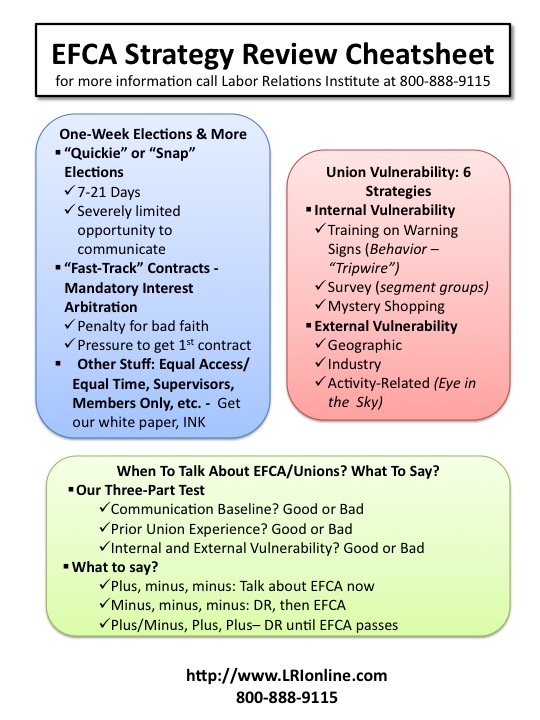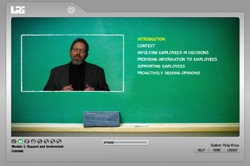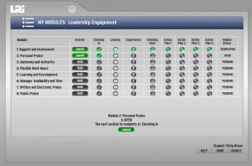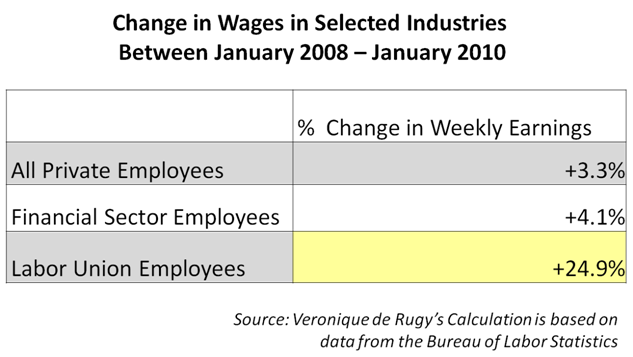 Labor Relations INK In This Issue: • Labor Relations Insight by Phil Wilson • EFCA Update • Health Industry In For Rough Ride • Soak The Rich To Create More Union Jobs • SEIU Watch, and more… Labor Relations Insight from Phil Wilson Open Government?
Labor Relations INK In This Issue: • Labor Relations Insight by Phil Wilson • EFCA Update • Health Industry In For Rough Ride • Soak The Rich To Create More Union Jobs • SEIU Watch, and more… Labor Relations Insight from Phil Wilson Open Government?  Yesterday I got an interesting email from the Department of Labor. The DOL is soliciting ideas for “Open Government.” “Open government” ranks right up there with “jumbo shrimp” or “civil war” in the oxymoron department. I’d love to see an estimate of the carbon footprint of the Freedom of Information Act. I know we send in thousands of FOIA requests each year to try to get supposedly “public” documents from our government. The email from DOL says its goal is to increase, “transparency, collaboration, and participation within DOL as part of the White House Open Government Initiative.” They invited me to share my ideas online. As opposed to just sharing them on the DOL website, I thought I’d share them with our readers. There’s a heck of a lot more people reading this newsletter (9,604 subscribers today, with new subscribers every day) than those commenting on the DOL site. The most popular item – allowing DOL experts to speak publicly – has 60 votes. This particular email came from the Office of Labor-Management Standards (OLMS) who, in their own words: “…enforces standards for union democracy, including provisions for union officer elections; protects union funds and assets; and ensures financial transparency by enforcing public reporting requirements. “ So far the OLMS agenda has been exactly the opposite of “open government” or transparency, at least as it relates to union democracy, protecting union funds and assets or enforcing public reporting requirements.
Yesterday I got an interesting email from the Department of Labor. The DOL is soliciting ideas for “Open Government.” “Open government” ranks right up there with “jumbo shrimp” or “civil war” in the oxymoron department. I’d love to see an estimate of the carbon footprint of the Freedom of Information Act. I know we send in thousands of FOIA requests each year to try to get supposedly “public” documents from our government. The email from DOL says its goal is to increase, “transparency, collaboration, and participation within DOL as part of the White House Open Government Initiative.” They invited me to share my ideas online. As opposed to just sharing them on the DOL website, I thought I’d share them with our readers. There’s a heck of a lot more people reading this newsletter (9,604 subscribers today, with new subscribers every day) than those commenting on the DOL site. The most popular item – allowing DOL experts to speak publicly – has 60 votes. This particular email came from the Office of Labor-Management Standards (OLMS) who, in their own words: “…enforces standards for union democracy, including provisions for union officer elections; protects union funds and assets; and ensures financial transparency by enforcing public reporting requirements. “ So far the OLMS agenda has been exactly the opposite of “open government” or transparency, at least as it relates to union democracy, protecting union funds and assets or enforcing public reporting requirements.  For example, among the first things proposed by the Solis Department of Labor is to rescind reporting requirements on union trust funds because these reporting requirements are “burdensome” on unions. I’d suggest they aren’t nearly as burdensome as it is trying to untangle the massive web of commingled assets, fiduciary conflicts and just plain mismanagement of union trust funds. How the OLMS can talk about open government and transparency with a straight face is beyond me. In its place the DOL is asking to reinstate the old, unhelpful reports that were provided before the T-1 requirement was imposed. Rest assured that other reporting requirements on the LM-2 Form will go on the chopping block as union officials complain about additional “burdens” like having to report on large individual transactions or on time spent on political or non-representational activities. The thing that always amuses me about this discussion is how it always centers on the burden created for union officers. What about the union members? I wish I could tell the IRS that I’ve decided not to do my taxes because it is too burdensome. Of course it is burdensome to do this reporting. It is especially a burden on the union officials who have something to hide from their members about how they are spending union dues or pension money. That’s the whole point of these requirements – to increase transparency and openness of unions to their members. Another key problem with the current reporting framework is that the DOL does virtually nothing to ensure that these reports get filed at all – or that there is any penalty for late or non-filing. Thousands of these reports go unfiled each year, but there is no effective way to tell. That is the simplest possible step that OLMS could take right on its website. This would allow members to see whether their union is complying with reporting requirements. I’ll probably post a couple of these ideas on the Open Government website, just for fun. Speaking of oxymorons, all I expect to hear is the sound of “deafening silence.” ********** EFCA Update Our friends at LaborPains.org reframed the fight over the Employee Free Choice Act quite well: EFCA is now a proxy label for an ongoing fight between the interests of Big Labor and U.S. businesses. It is highly unlikely that the original EFCA will ever see the light of day as an intact piece of legislation, or that it will ever even move forward as such. That hasn’t stopped Big Labor leadership or their political puppets (like VP Biden) from pushing it, nor the U.S. Chamber of Commerce from fighting against it. Both sides now seem to use “EFCA” as shorthand for aggressive labor law change, whether legislative or regulatory. Some still suggest that U.S. business leadership is quite in the dark about the dangers posed by even incremental changes to labor law. As James V. Meath put it,
For example, among the first things proposed by the Solis Department of Labor is to rescind reporting requirements on union trust funds because these reporting requirements are “burdensome” on unions. I’d suggest they aren’t nearly as burdensome as it is trying to untangle the massive web of commingled assets, fiduciary conflicts and just plain mismanagement of union trust funds. How the OLMS can talk about open government and transparency with a straight face is beyond me. In its place the DOL is asking to reinstate the old, unhelpful reports that were provided before the T-1 requirement was imposed. Rest assured that other reporting requirements on the LM-2 Form will go on the chopping block as union officials complain about additional “burdens” like having to report on large individual transactions or on time spent on political or non-representational activities. The thing that always amuses me about this discussion is how it always centers on the burden created for union officers. What about the union members? I wish I could tell the IRS that I’ve decided not to do my taxes because it is too burdensome. Of course it is burdensome to do this reporting. It is especially a burden on the union officials who have something to hide from their members about how they are spending union dues or pension money. That’s the whole point of these requirements – to increase transparency and openness of unions to their members. Another key problem with the current reporting framework is that the DOL does virtually nothing to ensure that these reports get filed at all – or that there is any penalty for late or non-filing. Thousands of these reports go unfiled each year, but there is no effective way to tell. That is the simplest possible step that OLMS could take right on its website. This would allow members to see whether their union is complying with reporting requirements. I’ll probably post a couple of these ideas on the Open Government website, just for fun. Speaking of oxymorons, all I expect to hear is the sound of “deafening silence.” ********** EFCA Update Our friends at LaborPains.org reframed the fight over the Employee Free Choice Act quite well: EFCA is now a proxy label for an ongoing fight between the interests of Big Labor and U.S. businesses. It is highly unlikely that the original EFCA will ever see the light of day as an intact piece of legislation, or that it will ever even move forward as such. That hasn’t stopped Big Labor leadership or their political puppets (like VP Biden) from pushing it, nor the U.S. Chamber of Commerce from fighting against it. Both sides now seem to use “EFCA” as shorthand for aggressive labor law change, whether legislative or regulatory. Some still suggest that U.S. business leadership is quite in the dark about the dangers posed by even incremental changes to labor law. As James V. Meath put it,
“In short, they [the unions] don’t need the EFCA, they just need minimal change in a system that actually has worked for the past 60 years and they will turn the tables in their favor. Increases in the number of union-organized employees in this country will occur.”
David Nye, professor of Management at Athens State University in Alabama, shines a new light on the potential ramifications one of the most grievous objectives of Big Labor:
EFCA would force the parties to submit to federal mediation if they cannot reach agreement in 90 days. If that fails, government appointed arbitrators would dictate the new labor contract.
Knowing that the purpose of EFCA is to reward unions for supporting the political party to which they have been joined at the hip pocket for 80 years, these arbitrators will not be confused about their marching orders: give the unions what they want.
Editorialist Doris O’Brien is also afraid that such radical amendment of current labor law would drastically enhance the intrusion of government into the affairs of American businesses:
At the time of the passage of the New Deal National Labor Relations Act, the Supreme Court said that its purpose was to ensure that business and labor could “work together to establish mutually satisfactory conditions,” without the intrusion of government. Under the pending EFCA legislation, however, cooperation between labor and management would cave in anticipation of shifting their own responsibilities onto bureaucratic shoulders. The proposed arrangement would risk fostering a hostile company environment, as more power gets concentrated in the hands of those outside the workplace. When we increase government clout, we diminish our own.
 States seem to see the handwriting on the wall. Insider sources are saying that Becker and Pearce will received recess appointments, and remarks from DOL head Solis seem to confirm this outcome. South Carolina and South Dakota are both promoting ballot initiatives to at least protect the secret ballot election process for union elections. The recent data about the decline of unions would lead one to wonder how Big Labor can still create such a ruckus in the policy sphere. Economist Raymond J. Keating sums it up well,
States seem to see the handwriting on the wall. Insider sources are saying that Becker and Pearce will received recess appointments, and remarks from DOL head Solis seem to confirm this outcome. South Carolina and South Dakota are both promoting ballot initiatives to at least protect the secret ballot election process for union elections. The recent data about the decline of unions would lead one to wonder how Big Labor can still create such a ruckus in the policy sphere. Economist Raymond J. Keating sums it up well,
Labor unions stand out as a classic example of a concentrated, special interest willing to spend big dollars to advance its agenda, even though that agenda will wind up doing far more harm than good for consumers, businesses, the economy and job creation. For example, the Employee Free Choice Act would raise costs and diminish competitiveness for U.S. businesses. And a tax on securities transactions would only serve to raise the costs of investment, and divert financial industry business to other nations.
Unfortunately, the resources that labor union leaders are willing to invest in the political process and the number of politicians willing to ignore economic reality – including the current White House and congressional leaders – means that the influence of labor unions on public policy will continue to far outstrip their ever-shrinking role in the private sector economy.
********** Health Industry In For Rough Ride  Although the latest data indicates that union membership in the private sector has been shrinking, the trends for health care are moving in the opposite direction. The U.S. Bureau of Labor Statistics data showed that 693,000 health care workers were union members in 2000 (about 12.9%). In 2009 the number rose to 962,000 (13.6%). Early indications for 2010 seem to indicate the trend will continue. “Unions very much want to gain inroads in expanding sectors of the labor force, and they know that if they can organize nurses and other health care workers, they will have a future,” said Gary Chaison, PhD, professor of industrial relations at Clark University in Worcester, Mass. “Second, nurses and other health care workers feel a loss of control in their jobs because of cost-cutting pressures, particularly with the uncertainties of the impact and unintended consequences of health care reform legislation.” The emergence of the new nurses super union, National Nurses United, should only add fuel to the fire. “We’re watching hospitals continue to try to cut back, and it’s always nursing,” commented said Karen Higgins, RN, a critical care nurse at Boston Medical Center and co-president of National Nurses United. ********** FREE! Union Organizing Defense Review & Vulnerability Audit
Although the latest data indicates that union membership in the private sector has been shrinking, the trends for health care are moving in the opposite direction. The U.S. Bureau of Labor Statistics data showed that 693,000 health care workers were union members in 2000 (about 12.9%). In 2009 the number rose to 962,000 (13.6%). Early indications for 2010 seem to indicate the trend will continue. “Unions very much want to gain inroads in expanding sectors of the labor force, and they know that if they can organize nurses and other health care workers, they will have a future,” said Gary Chaison, PhD, professor of industrial relations at Clark University in Worcester, Mass. “Second, nurses and other health care workers feel a loss of control in their jobs because of cost-cutting pressures, particularly with the uncertainties of the impact and unintended consequences of health care reform legislation.” The emergence of the new nurses super union, National Nurses United, should only add fuel to the fire. “We’re watching hospitals continue to try to cut back, and it’s always nursing,” commented said Karen Higgins, RN, a critical care nurse at Boston Medical Center and co-president of National Nurses United. ********** FREE! Union Organizing Defense Review & Vulnerability Audit  This has quickly become one of our most popular programs, in light of upcoming labor law changes. It is more important than ever to assess both the internal and external factors that contribute to your company’s vulnerability to union penetration, and formulate action plans to shore up any uncovered weaknesses. • What are the most likely labor law changes, and how will they impact my vulnerabilities? • What are the six strategies I can implement to strengthen my defense against union encroachment? • When do I talk to my employees about unions? What do I say about unions? CLICK HERE to schedule your free 30-minute consultation with Phil Wilson, LRI’s President and General Counsel.
This has quickly become one of our most popular programs, in light of upcoming labor law changes. It is more important than ever to assess both the internal and external factors that contribute to your company’s vulnerability to union penetration, and formulate action plans to shore up any uncovered weaknesses. • What are the most likely labor law changes, and how will they impact my vulnerabilities? • What are the six strategies I can implement to strengthen my defense against union encroachment? • When do I talk to my employees about unions? What do I say about unions? CLICK HERE to schedule your free 30-minute consultation with Phil Wilson, LRI’s President and General Counsel.
**********
12 Union Myths Exposed In our third installment of The Cato Journal’s January 2010 “Are unions good for America?” issue, we cover the third myth. Here is The Homeland Stupidity web site’s synopsis of this myth, and a link to each of the 12 Cato articles.
Myth Number Three: Project labor agreements reduce project costs and delays and are good for construction workers as a whole.
Fact: Project labor agreements increase costs and only help union workers. PLAs are agreements between construction project owners and unions that contractors on the project must use union labor, even if they otherwise would not. David G. Tuerck, economics professor and chair at Suffolk University, cites numerous examples of how nonunion workers were harmed when they worked under PLAs, “first by forcing them to pay twice for benefits already offered their workers and second by forcing pay cuts on their workers.” Then, unions use veiled threats to “labor peace” to intimidate project owners into accepting PLAs for “job stability.” Further, PLAs increased costs for every project studied which used them, sometimes as much as 20 percent.
“PLAs are motivated by a desire on the part of the construction unions to shore up the declining union wage premium against technological changes and other changes that make traditional union work rules and job designations obsolescent,” Tuerck writes. “Now the PLA has evolved into an instrument that the unions employ in tandem with the prevailing wage laws in order to reduce the competitive advantage of nonunion contractors.”
Download the PDF here. Check out the Cato Journal and access all 12 PDFs here. ********** Soak The Rich To Create More Union Jobs Trumka and the AFL-CIO propose a novel way to create jobs: tax Wall Street financial transactions and use the revenue to fund “infrastructure” jobs, such as road-paving. These jobs tend to be unionized. In addition, the AFL-CIO plan suggests jobs meet “minimum labor standards,” another way to say “likely to be union” jobs. Although some financial mavens have agreed that implementing certain transaction taxes may mitigate rampant speculation in the markets, neither the government nor the U.S. Chamber of Commerce agree that taxes are the answer to speculation issues or to job creation. The AFL-CIO intends to unleash a grass-roots campaign for the jobs program, called “Jobs Now Make Wall Street Pay,” in mid-March. Trumka is hoping to capitalize on voter anger over the government bank bailout scheme. Although Trumka says his plan would raise $100 billion dollars per year in revenue, Martin Regalia, chief economist for the chamber, said such a plan was flawed and the tax would simply send transactions to other countries that didn’t have such a tax. “The way to create jobs is not to increase taxes and certainly not to increase taxes on financial transactions,” he said. ********** Good Work If You Can Find It… Private sector wages over the last 2 years have basically kept up with inflation, growing at 3.3%. The financial industry saw minimal growth, rising only 4.1% during that time. Where does one go to find a business sector that is growing? High tech, biotech, healthcare? The answer leads to an industry that produces nothing of value to the GDP, and typically restricts the growth of the enterprises it is connected to: the Labor Union Industry. The wages for employees of labor unions skyrocketed and incredible 24.9%!
The other option would be the “enterprise” that labor unions are now so deeply embedded with: government employees.[2] It should surprise no one that the two enterprises that contribute nothing except more restrictive bureaucracy and regulation, and that takes their salaries out of the pockets of hard working Americans in the form of dues and taxes, continue to take care of their own while the rest of Americans struggle.
The number of those employed in government has increased during the last two years, while the private sector shed 8.7 million jobs. In addition, recent comparisons indicate that government jobs pay more than most of their private sector counterparts. **********
LRI’s Brand New Online Supervisory Training Program
 If there is one thing we have learned after more than 20 years and over 10,000 elections battling unions, it is this:
If there is one thing we have learned after more than 20 years and over 10,000 elections battling unions, it is this:
Your front line supervisors are the number one key to a solid union defense, and a positive workplace.
Nothing takes the place of properly trained front line managers and supervisors, but in today’s hectic business environment, we’ve never asked our front line leaders to do more with less. How in the world can you take the time to pull them from their jobs, and provide training that really makes a difference! Our new Online Active Interval Training (OAIT) is the answer. OAIT includes:  • Easy access from any computer • Research-based and validated content • Best adult learning principles available • Only 15-20 minutes per week • Real time tracking of attitudes, skills and knowledge • Instantaneous reporting and learner feedback • Personalized action plans for immediate implementation • Accountability to upper level manager for progress and plan execution OAIT is incredibly value-priced, PLUS you can try it absolutely FREE!. For complete details, visit this page on our web site, or call us at 800-888-9115. ********** New Jersey Comcast Unit Falls to IBEW
• Easy access from any computer • Research-based and validated content • Best adult learning principles available • Only 15-20 minutes per week • Real time tracking of attitudes, skills and knowledge • Instantaneous reporting and learner feedback • Personalized action plans for immediate implementation • Accountability to upper level manager for progress and plan execution OAIT is incredibly value-priced, PLUS you can try it absolutely FREE!. For complete details, visit this page on our web site, or call us at 800-888-9115. ********** New Jersey Comcast Unit Falls to IBEW  Installation repair technicians at Comcast in Fairfield, N.J. recently elected to be represented by the Electrical Workers Local 827. According to the AFL-CIO blog, Union leaders say this latest win will likely have a ripple effect, setting a precedent for future efforts. IBEW Telecommunications Director Martha Pultar said this victory is a good sign for more than a dozen other ongoing Comcast campaigns from New England to Washington and Oregon. ********** R-E-S-P-E-C-T Not only are unions losing members, they are losing respect among Americans. In the latest nationwide survey by the Pew Research Center for the People & the Press, only 41% say they have a favorable opinion of labor unions. In January 2007, a clear majority (58%) had a favorable view of unions.
Installation repair technicians at Comcast in Fairfield, N.J. recently elected to be represented by the Electrical Workers Local 827. According to the AFL-CIO blog, Union leaders say this latest win will likely have a ripple effect, setting a precedent for future efforts. IBEW Telecommunications Director Martha Pultar said this victory is a good sign for more than a dozen other ongoing Comcast campaigns from New England to Washington and Oregon. ********** R-E-S-P-E-C-T Not only are unions losing members, they are losing respect among Americans. In the latest nationwide survey by the Pew Research Center for the People & the Press, only 41% say they have a favorable opinion of labor unions. In January 2007, a clear majority (58%) had a favorable view of unions.  Even among union households, almost a quarter of those responding held an unfavorable view of unions. ********** GM Snubs UAW General Motors opened a new lithium battery plant in Michigan in January. To the surprise of most, the company hired no laid-off UAW members for its work force, but instead hired non-union labor. Quipped blogger Ed Niedermeyer, “If GM can get away with using non-union workers at a crucial plant that’s supposed to represent the firm’s future, things aren’t looking so good for our friends in organized labor.” Additionally, GM joined with Chrysler and Toyota to outsource Teamster car haulers’ work to non-union trucking firms, replacing the Teamster drivers at Ryder Truck with a non-union company. It will be interesting to see how the weakened UAW will respond. ********** SEIU Watch
Even among union households, almost a quarter of those responding held an unfavorable view of unions. ********** GM Snubs UAW General Motors opened a new lithium battery plant in Michigan in January. To the surprise of most, the company hired no laid-off UAW members for its work force, but instead hired non-union labor. Quipped blogger Ed Niedermeyer, “If GM can get away with using non-union workers at a crucial plant that’s supposed to represent the firm’s future, things aren’t looking so good for our friends in organized labor.” Additionally, GM joined with Chrysler and Toyota to outsource Teamster car haulers’ work to non-union trucking firms, replacing the Teamster drivers at Ryder Truck with a non-union company. It will be interesting to see how the weakened UAW will respond. ********** SEIU Watch  Mr. Teflon, Andy Stern of the SEIU, has thus far evaded any further inquiry into his alleged violation of lobbying regulations, and received an Obama appointment to a special “debt panel.” Since Congress doesn’t have the moral resolve to take action into the runaway federal deficit, Obama created an 18-member panel tasked to recommend ways to balance the federal budget by 2015. After observing the last several years of SEIU tactics, it seems Stern may be quite the dubious choice. Stern’s leadership of SEIU received a solar plexus punch when Local 1021 swept his appointed leaders aside in a recent election, capturing all of the major offices and winning almost total control of the Executive Board. The outcome was salt in the recent wounds created by SEIU losses at Santa Rosa Memorial and Kaiser Sunset Hospitals. Labor author Randy Shaw explained the election results as a referendum on Stern’s leadership:
Mr. Teflon, Andy Stern of the SEIU, has thus far evaded any further inquiry into his alleged violation of lobbying regulations, and received an Obama appointment to a special “debt panel.” Since Congress doesn’t have the moral resolve to take action into the runaway federal deficit, Obama created an 18-member panel tasked to recommend ways to balance the federal budget by 2015. After observing the last several years of SEIU tactics, it seems Stern may be quite the dubious choice. Stern’s leadership of SEIU received a solar plexus punch when Local 1021 swept his appointed leaders aside in a recent election, capturing all of the major offices and winning almost total control of the Executive Board. The outcome was salt in the recent wounds created by SEIU losses at Santa Rosa Memorial and Kaiser Sunset Hospitals. Labor author Randy Shaw explained the election results as a referendum on Stern’s leadership:
Ultimately, the Change 1021 victory is another rejection of Stern’s model of top-down leadership, with its focus on members as dues payers rather than active framers of a labor movement. A union that once attracted top organizers from other struggles now sees a constant talent exodus, with the key organizer of its Houston janitors’ campaign leaving for the UFCW only last week.
Not one to mince words, when Stern sat down with a writer from The Cornell Daily Sun following a speech at the School of Industrial and Labor Relations, he equated American business leaders with communists. Quoting Stern,
…the private sector has decided that they want to give people a communist choice, which is no union. That’s all they really want on their ballot, and anyone who really tries to buck the domination and tyranny of the employer will pay a price.
********** Sticky Fingers! Current charges or sentences of embezzling union officials: Johnny Banes – USW: $38,329 Tammy Smith – IUPAT: $11,000 John Vinson – CSEA: $70,000 Edward Rodzwicz- BLET: $20,000 Gene Tomatani – POA: $75,388 Gary Day – LIUNA: $10,827 Lisa Wright – TEU: $71,470 Anthony Forte – UAW: $1,250,000 David Miller – IWU: $50,501 Sherri Patrick – DFT: $75,000 ********** Labor Relations INK is published semi-monthly and is edited by Labor Relations Institute, Inc. Feel free to pass this newsletter on to anyone you think might enjoy it. New subscribers can sign up by visiting: https://lrionline.com/free-stuff/newsletter-signup/ If you use content from this newsletter please attribute it to Labor Relations Institute and include our website address: www.LRIonline.com Contributing editors for this issue: Phillip Wilson, Greg Kittinger, Shaun Fanning You are receiving this email because you subscribed to receive our labor relations newsletters and updates. You can manage your email preferences by clicking the link at the bottom of any of our email communications. NOTE: if you are using Internet Explorer v. 6, read the text version, as the html will not load properly in IE6. We recommend upgrading to IE7.






